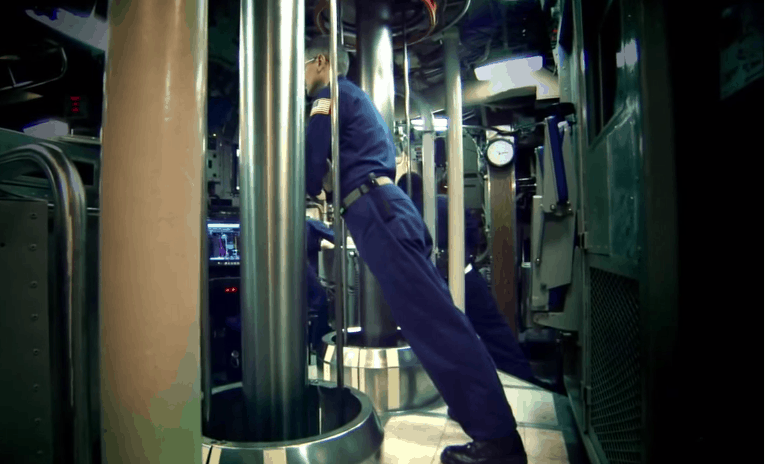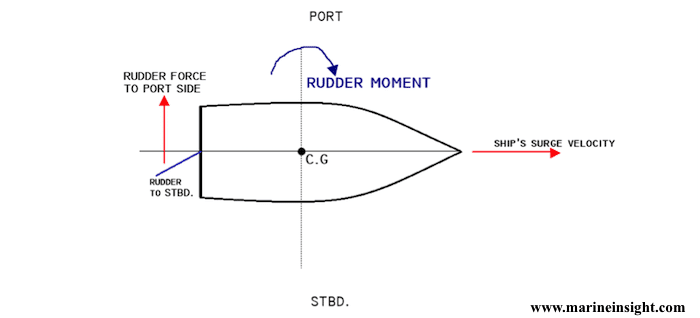HOME
CONTROL SURFACES
The propeller is capable of only moving the submarine
forward. To effectively move in any direction within
the ocean, the Ohio class has three sets of control
surfaces.

HOW THEY WORK
Control surfaces behave similar to aircraft wings.
The difference is that instead of the wing's shape, it is
the rotation of the surface that creates a pressure
differential. It starts by taking advantage of the
relative momentum of passing seawater. The rotation
causes water to deflect in different ways on either side
of the surface. For a given direction of rotation, a
high pressure zone is formed on the side in which the
surface was turned. A low pressure zone is formed on
the opposite side. This pressure difference produces
a non-zero net force in the direction of the low pressure
zone, a force that translates to the entire ship.
TYPES OF CONTROL SURFACES
The three types of surfaces the Ohio class has are the
rudder, stern planes, and fairwater planes. The
location of these surfaces play an important role.
Both the rudder and the stern planes are located right at
the end of the 560 ft long ship. This is done to
maximize the length of the moment arm in order to maximize
the desired changes. For the rudder, this means that
the submarine can conduct the tightest turn
possible. For the stern planes, this puts an up or
down angle on the ship, allowing the propeller to quickly
push it to a new depth.
The fairwater planes are located on the sail, which is
the tower that defines the iconic shape of a
submarine. This location is placed closer to the
center of the ship as an alternative, slower depth
adjustment. Using the fairwater planes has a
tendency to allow the ship to change depth while staying
relatively level. Realistically, driving the ship
requires the skill to vary the combined use of all three
control surfaces.
IMAGE SOURCES: Submarine
Group Nine, Facebook
The control surfaces are mechanically connected to huge
hydraulic pistons such that they convert the linear motion
of the piston into rotational motion on the planes.
These pistons are controlled from valves in the hydraulic
system. The position of these valves are also
controlled hydraulically in response to operating what are
colloquially known as "the sticks" in the control room.

IMAGE SOURCE: Free
Republic
